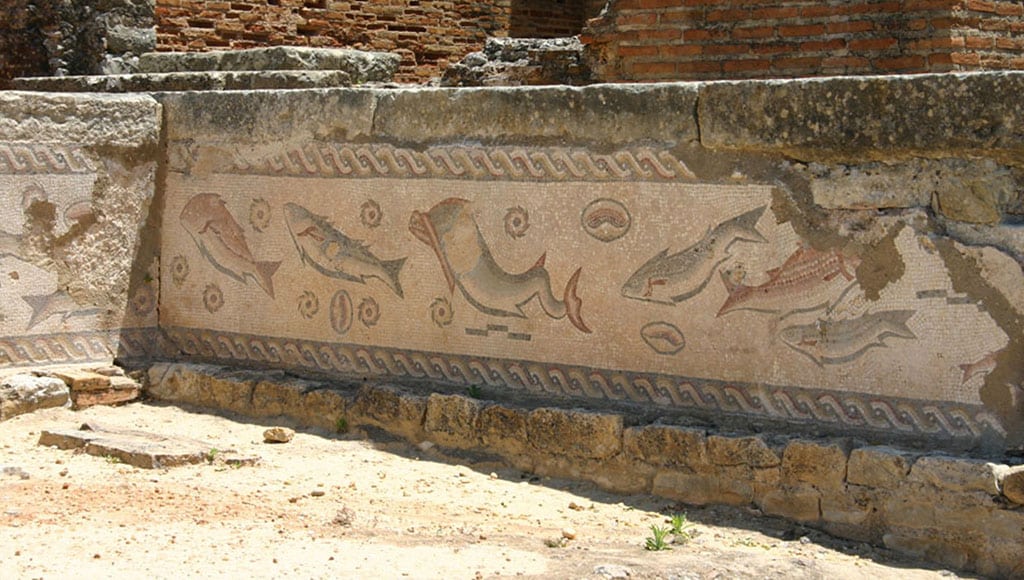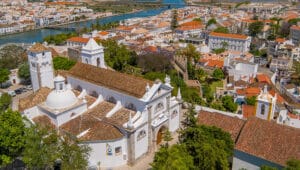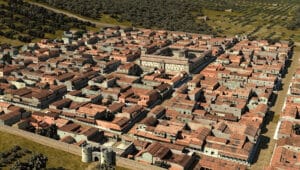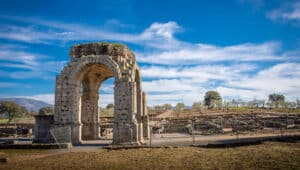The Social Order and the Rural Economy
The structure of Roman Society in the days of the Republic was rigid and based entirely on the traditional concepts of a ruling elite comprised of male aristocrats whose power was based on the accumulation of inherited wealth consisting of property and precious possessions.
Women were regarded as chattels who were subject to strict rules concerning their functions for breeding and domestic labour.
All decisions of State were made by senators assisted by a lower equestrian (knightly) class who fulfilled all the executive positions of government and the officer corps of the army. Below came the plebian lower class with divisions of tradesmen, manual workers, foot soldiers and freed men.
Finally, there were slaves without any rights whatsoever and whose existence was entirely at the mercy of their masters. A complex system of patriarchal control and patronage ordered all these lives.
The canny Augustus (Emperor from 31 BC to 14 CE) initiated changes to this social order by reducing the powers of the 600 senators and vastly increasing the numbers of the equestrians, all of whom received salaries from the State but were also required to show a minimum cautionary wealth. Recruitment was mainly from the Octavian clan to ensure sovereign loyalty.
Popularity among the hoi polloi was ensured by decreasing property taxes and increasing the legal protection of debtors from seizure of assets. Although women continued to be subject to the rule of “pater familia”, they were now able to be owners of property and businesses and could end their marriages by declaration.
As to the slaves, their lot was gradually improved with protection in law to receive nominal wages in relation to the skill with which services were performed and to be manumitted if they so desired.
All of these changes were translated to Lusitania where it is estimated that the population may have been in the region of 400,000 during the Augustan era. Of these, the great majority would have been of indigenous tribal and Celtic descent, but in the central and southern regions there were probably substantial colonies related to the Carthaginians, Greeks, Phoenicians and the immigration of north African people from Mauretania.
To all of these, the process of Romanisation was enforced with Latin becoming the official language and the imposition of the new social order and legal system. Latin rights were applied either to selected individuals or to communities such as that of Olissipo Felicitas Julia.
These rights varied from place to place but, in general, “ius Latii – commercii, connubii, migrationis” gave the right to enter into contracts and trade with Roman citizens on equal status, the right to marry pursuant to law and not custom and the right to maintain one’s degree of citizenship when relocating to another municipium. Eventually, the Emperor Vespasian (69-79 CE) granted Latin rights to the whole of Hispania.
The prospect of growing prosperity in a scenically attractive country induced many veterans of the Legions to stay especially when their retirement package included the grant of rural tracts ranging from 10 to 100 hectares depending on rank and length of service. 
The new capital of Myrtilis (Mértola) was created by these men and their families while immigrant craftsmen from Italica had already settled near Scallibus (Santarém). In total, there were five Roman colonies adjacent to which vici (planned villages) were constructed to house local labour and services.
Emperor Augustus received tribute directly from Lusitania and this encouraged wealthy investors from Rome to seek concessions from him in the burgeoning economy.
Members of the military equestrian class were attracted to the pastoral life and built villas in the Alentejo and along the western seaboard. Areas could vary between 100 and 1,000 hectares depending on the quality of arable land and the buildings erected varied in size from sumptuous manor houses to smaller homesteads, but all incorporated such features as peristyle enclosed temples, pools and baths with lead plumbing to provide hot and cold water. Floor mosaics, murals and statues indicated the wealth and social rank of the owners.
The plains of the Alentejo were largely unsuitable for wheat production due to poor yield from the dusty land, but vines and olives were extensively grown, especially in the valley of the Guadiana and along the road from Myrtilis to Ebora. These fruits enabled the production of good wine and olive oil both for export and to supply the urban centres.
Near the coast, there is evidence of fish preserving factories and the production of garum – a highly popular seasoning. Extensive ruins of one of the largest of these can be seen at Troia, near Setúbal. The factories also conserved prime cuts of meat either by smoking or by salting. As their production probably exceeded local demand, exports and victuals for the military must have formed an important part of the Lusitanian economy.
These agricultural ventures brought new plants, seeds and techniques to Lusitania and also provided employment for a growing native workforce which was housed in designed farm buildings – certainly more comfortable than the shacks of settlements.
Little is known about the agriculture methods of the 1st and 2nd centuries in the territory north of Coimbra, but it seems certain that this continued as subsistence farming with strips being allocated to the inhabitants of each village or hillfort. Large forests of oak and other deciduous trees occupied much of the landscape, but there is no indication of timber management of any great size. Certainly, there was little sign of a Roman presence or large-scale activity.


























